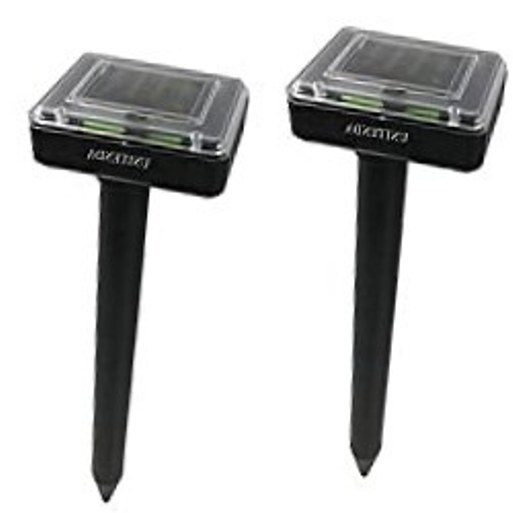Do mole repellants work?
Moles are common creatures that spend the vast majority of their time underground. There are approximately 42 species of moles on Earth, and most are found in North America, Europe, and Asia. They excel at digging and have numerous specialized adaptations that make them able to dig extremely efficiently. Some reports say they can dig more than 15 feet in one hour.
Moles also have highly acute senses of hearing and touch which they use to navigate while
underground. They really don’t rely on their eyesight as it is quite poor. This is one big reason they rarely appear above ground. Moles are also able to absorb more oxygen from the air than most animals thanks to a special adaptation in their blood. This allows them to stay underground in low-oxygen areas for long periods. They can also reuse exhaled air while underground.
Most mole tunnels are not visible and extend deeper underground, from one foot up to 15 feet deep. These tunnels cause the most damage. Moles don’t actually eat plants or roots, but their extensive digging can expose roots to other predators and remove essential plant nutrients. Mole tunnels can also dislodge young plants and make it difficult for new seeds to take root. Moles can also damage sprinkler systems by dislodging sprinkler heads and placing extra stress on water lines.
Mole Repellants
There are many different types of mole repellants, and they each have varying levels of effectiveness.
Castor Oil
One of the most common mole repellants is based on castor oil. The Washington Department of Fish and Wildlife has said that castor oil-based mole repellents have seen success when tested on specific mole species in the eastern United States.
Castor oil comes from the beans of the castor bean plant. The oil itself is non-toxic and safe for the environment. It won’t damage plant life or harm household pets like dogs and cats. You should apply castor oil mole repellants directly to the ground in and around the entrances to mole tunnels. The odor of the oil will upset the mole’s highly sensitive sense of smell and cause the animal to flee.

Castor oil can be found at many gardening, landscaping, and agricultural supply stores. If you buy the pure oil, you should mix it with standard dish soap in a 2:1 ratio. The best way to apply the mixture is to place it in a sprayer attachment for your garden hose, then use the hose to direct the repellant wherever you need it. Castor oil repellants are easy to apply and only need to be sprayed once per week. If it is raining heavily, the repellant should still stick around so you don’t need to worry.
Tar
Much like castor oil, moles also despise the smell of tar. Using tar as a repellant is not great for the environment and can cause more harm to your lawn or garden than other repellants, so you need to be careful if you use it. The best way to apply tar as a mole repellant is to coat a small object like a rock in a thick layer of the substance, then place that object inside the entrance to a mole tunnel.
Granulated Repellants
Granulated repellants also work by giving off odors that moles hate. Most will contain some combination of castor oil, garlic, and citronella oil. There are plenty of these available commercially, but you can also make some yourself from other materials. Cat litter has been reported as a successful mole repellant when spread in and around mole tunnel entrances. Blood meal works in much the same way. This dry powder is made from the blood of pigs and cows which are processed in slaughterhouses. It’s available at most agricultural supply stores because it’s often used as animal feed. Apply it in and around moles tunnels just like other types of mole repellants.
Plants
There are also some types of plants that give off odors that repel moles. You can try planting daffodils and marigolds to start. You can also try any other plants from the allium family like Purple Sensation, Gladiator, Globemaster, Star of Persia, tumbleweed onion, and Siberian chives. There are many more plants in the allium family you can try too. The best part of this repellant is that it’s totally harmless to other animals and even enhances the look of your property.
Mechanical Repellants
Sonic repellants are another safe mole repellant method that won’t harm your pets or your yard. Known as ultrasonic spikes, these devices send ultrasonic vibrations into the ground that humans cannot detect. Moles, however, despise these vibrations due to their acute sense of hearing. Placing an ultrasonic spike around your yard about every hundred feet can be an effective mole repellant method.
Other mechanical repellants include “thumpers” which create vibrations by literally smacking the ground over and over. This can also effectively repel moles because the vibrations will scare the animals.
Eliminate Food Source
One other mole repellant method you can try involves eliminating the animal’s food source. Moles love to eat insects like worms and slugs, so using some commercial insecticide might drive them away if you’re able to wipe out most of their available food. This isn’t great for the environment or the local ecosystem in your yard, mainly because many of the insects that moles like to eat are beneficial for plant life. That said, it can be effective if you’ve exhausted all other mole repellant methods with no success.
Select Your Animal

Raccoons
Raccoon Removal Information & How-To Tips

Squirrel
Squirrel Removal Information & How-To Tips

Opossum
Opossum Removal Information & How-To Tips

Skunks
Skunks Removal Information & How-To Tips

Rats
Rat Removal Information & How-To Tips

Mouse
Mouse Removal Information & How-To Tips

Bat
Bat Removal Information & How-To Tips

Bird
Bird Removal Information & How-To Tips

Snake
Snake Removal Information & How-To Tips

Beaver
Beaver Removal Information & How-To Tips

Mole
Mole Removal Information & How-To Tips

Vole
Vole Removal Information & How-To Tips

Gopher
Gopher Removal Information & How-To Tips

Rabbit
Rabbit Removal Information & How-To Tips

Woodchuck
Woodchuck Removal Information & How-To Tips

Flying Squirrel
Flying Squirrel Removal Information & How-To Tips

Chipmunk
Chipmunk Removal Information & How-To Tips

Coyote
Coyote Removal Information & How-To Tips

Fox
Fox Removal Information & How-To Tips

Wild Hog
Wild Hog Removal Information & How-To Tips

Dead Animal
Dead Animal Removal Information & How-To Tips